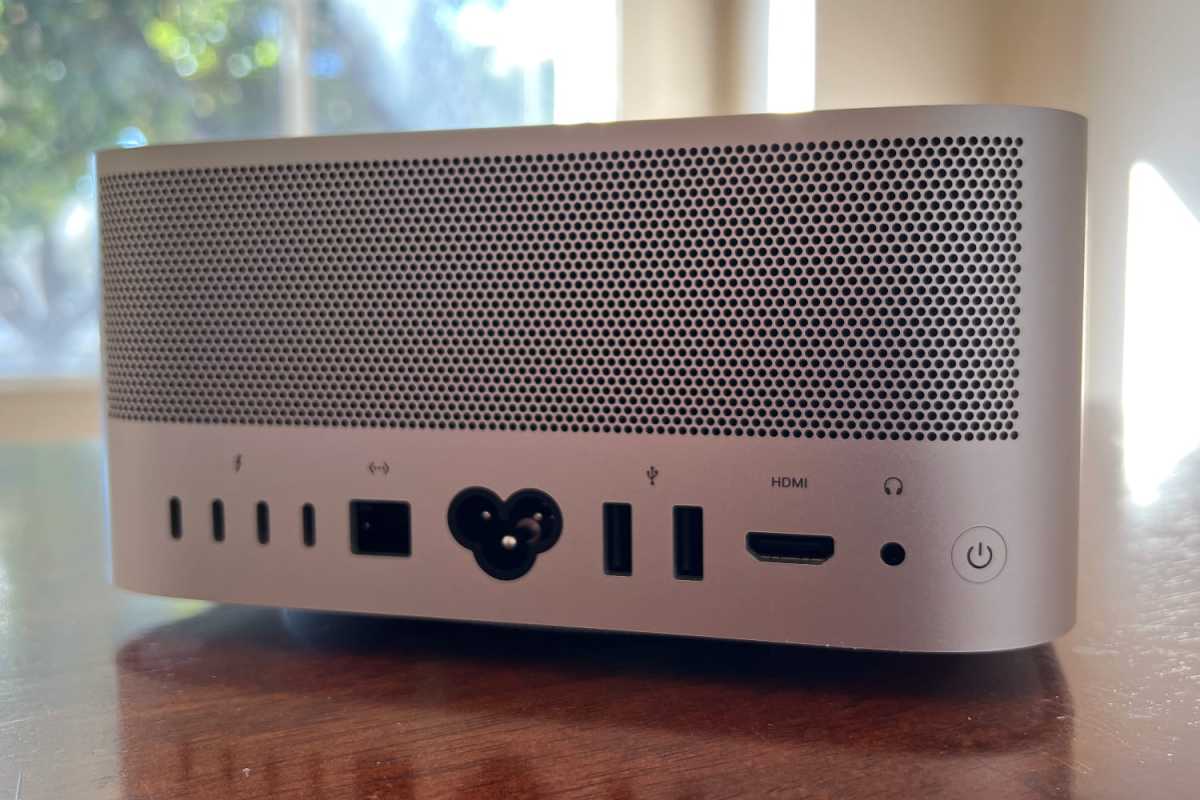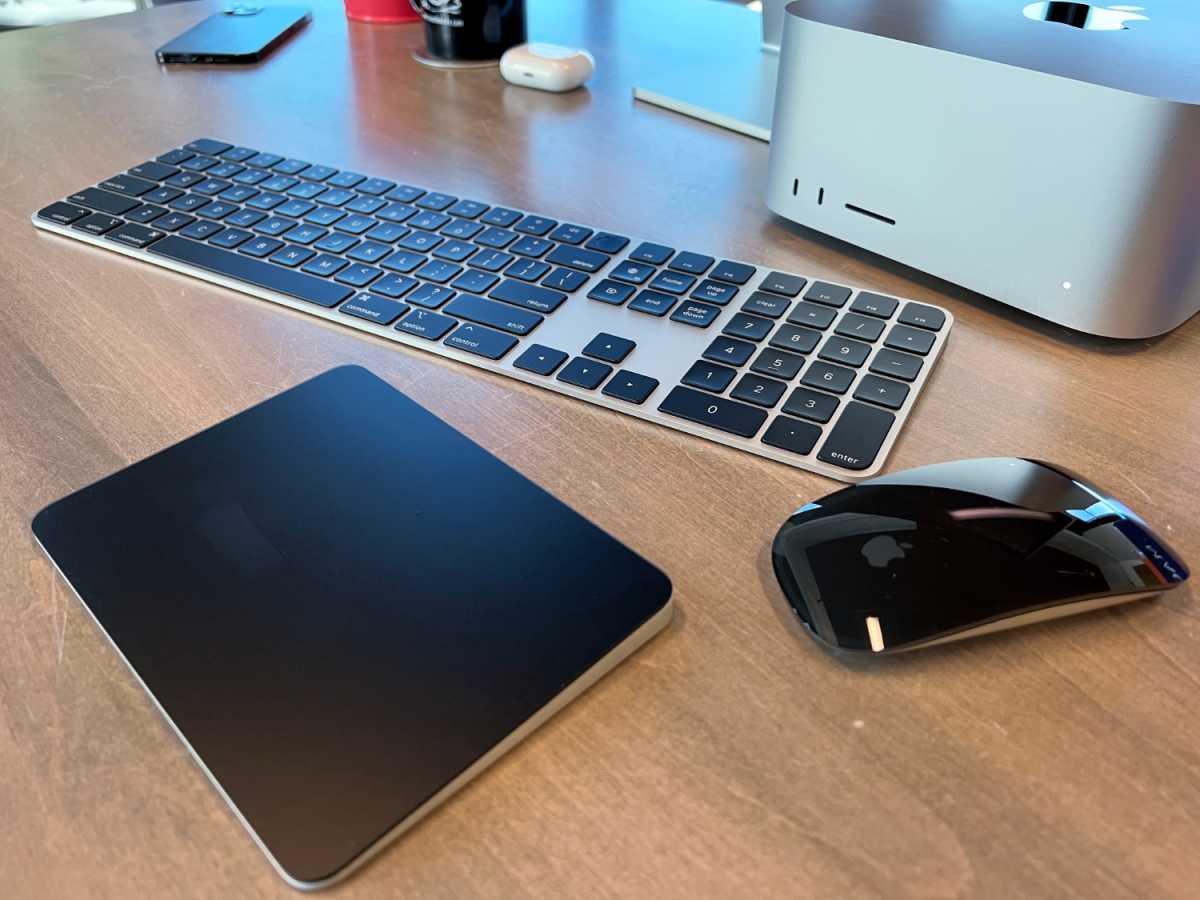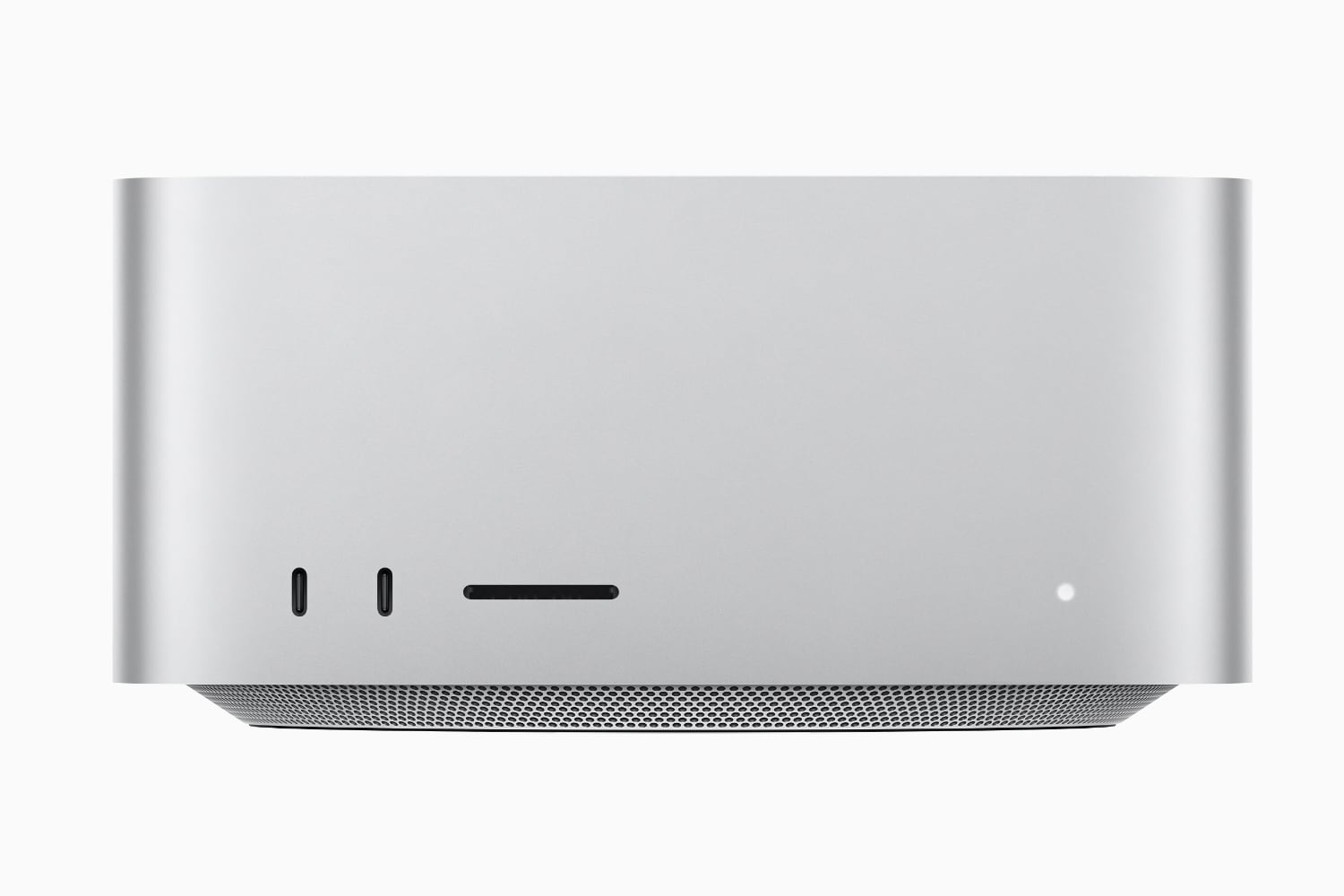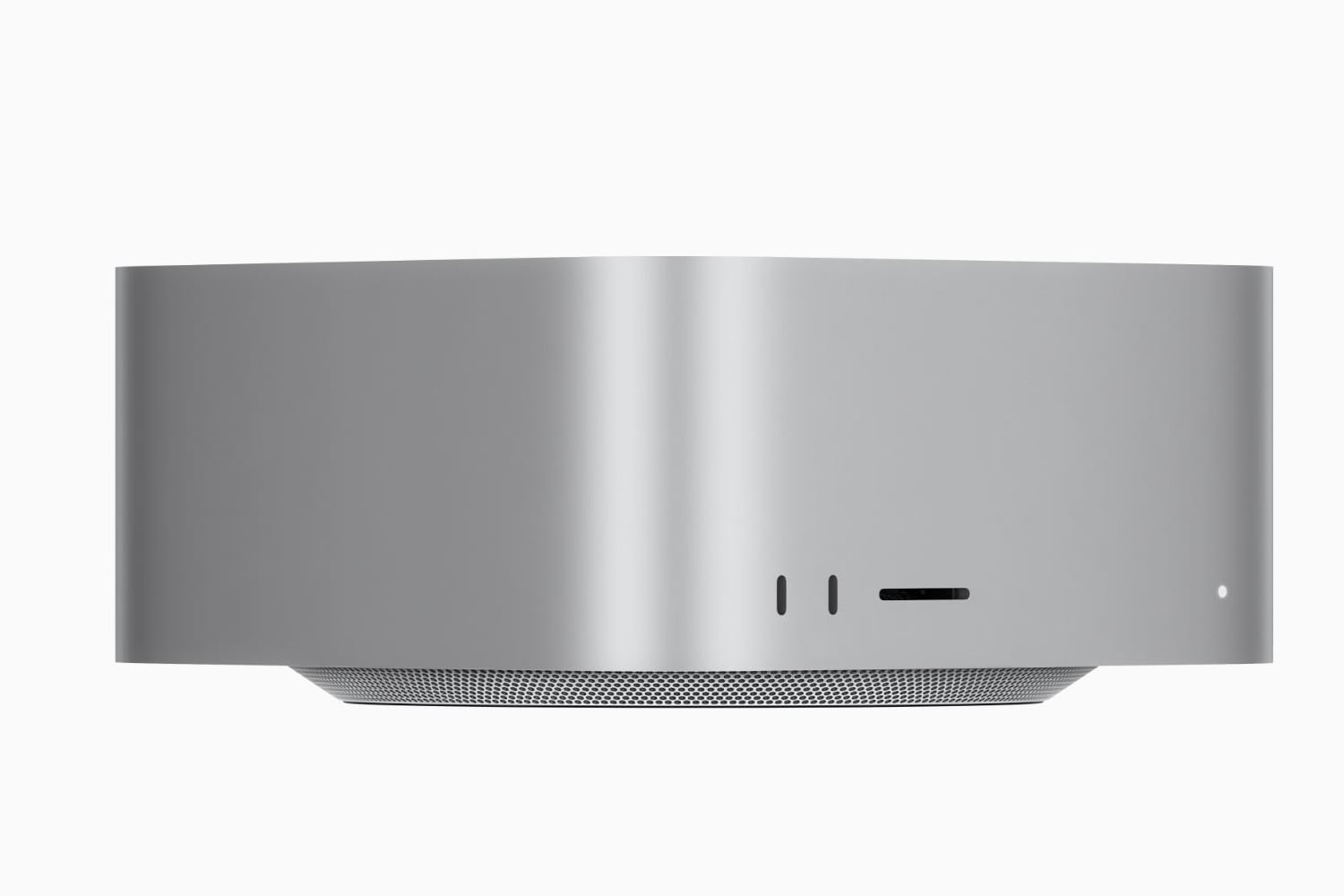The Mac Studio is Apple’s new desktop Mac. It sits between the Mac mini and iMac on the consumer side and the Mac Pro on the high-end pro side. It offers a significant boost in multi-core and graphics performance and more connectivity options over the consumer Macs, but it will probably be a few performance notches below the upcoming Apple silicon-based Mac Pro, which could offer even more ports, expansions slots, and upgradability.
The Mac Studio is ideal for users who spend a lot of time waiting for their Macs to process data. If you work in video, graphics, audio, data computation, code compilation, or anything else where you often sit and watch a progress bar, the Mac Studio will cut those times down significantly. If you have a lot of gear that you need to connect, you’ll appreciate the Mac Studio’s ports.
The latest news about the Mac Studio
March 24, 2022: iFixit has conducted a teardown of the Mac Studio and learned that while the SSD storage modules are removable, they are not upgradable, despite the existence of an empty slot in lower configurations. However, they did learn that you can swap out the same storage from another machine if a drive fails.
March 19, 2022: Apple will be selling a lock adapter to secure the Mac Studio to a desk, according to MacRumors.
Mac Studio: Models and specifications
Apple sells two standard configurations of the Mac Studio.
| $1,999 standard configuration | $3,999 standard configuration | |
|---|---|---|
| Processor | M1 Max 10-core CPU (8 performance cores, 2 efficiency cores) |
M1 Ultra 20-core CPU (16 performance cores, 4 efficiency cores) |
| Memory | 32GB | 64GB |
| Memory bandwidth | 400GBps | 800GBps |
| Neural Engine | 16-core | 32-core |
| Media engine | 1 video decode engine 2 video encode engines 2 ProRes encode and decode engines |
2 video decode engine 4 video encode engines 4 ProRes encode and decode engines |
| Storage | 512GB SSD | 1TB SSD |
| Graphics | 24 cores | 48 cores |
The M1 Max Mac Studio has these available upgrades for an additional cost: 32-core GPU; 64GB of RAM; 1TB, 2TB, 4TB, or 8TB SSD.
The M1 Ultra Mac Studio has these available upgrades for an additional cost: 64-core GPU; 128GB of RAM; 2TB, 4TB, or 8TB SSD.
Mac Studio: Ports
The M1 Max and M1 Ultra Mac Studio have the same rear ports:
- 4 Thunderbolt 4 ports
- 2 USB-A ports
- 10Gb ethernet
- HDMI 2.0
- 3.5 mm headphone jack

Rear ports on the Mac Studio.
Roman Loyola/IDG
The front ports, however, are slightly different:
- M1 Max Mac Studio: 2 USB-C ports, SDXC Card slot
- M1 Ultra Mac Studio: 2 Thunderbolt 4 ports, SDXC Card slot
Mac Studio: Display
The Mac Studio does not have a display, so you’ll have to provide your own. You can connect a display through HDMI or through one of the rear Thunderbolt 4 ports. In order to make sure you use a compatible display, here are the maximum specifications you can use.
- HDMI: This port implements the 2.0 specification, so the highest resolution display you can use is 4K with a refresh rate of 60Hz.
- Thunderbolt 4: You can connect up to a 6K display with a refresh rate of 60Hz.
The Mac Studio can support up to five displays: one display through HDMI, and then four additional displays using Thunderbolt 4.

Mac Studio connected to the Apple Studio Display (left) and LG Ultrafine Display (right) via Thunderbolt.
IDG
Apple released the Studio Display at the same time as the Mac Studio. Apple often associates the two, but the Studio Display is rather expensive for what you get. Basically, any third-party displays will work, but you will need to check the connectors on the display to see if you need adapters. The Mac Studio’s HDMI connector is standard, so if the display comes with an HDMI cable, it should work. However, the display may not include cables you can use to connect to Thunderbolt 4. If you have a display that uses DisplayPort, DVI, or VGS, you’ll need an adapter with a USB-C connector (which is supported by Thunderbolt 4).
Mac Studio: Connectivity
The Mac Studio has Wi-Fi and Bluetooth. It also has a 10Gb ethernet port, in case you want to connect to a wired network. See the Ports section above for a list of the ports that are included on the Mac Studio.
Mac Studio: Keyboard, mouse, trackpad
Like the Mac mini, Apple does not include input devices with the Mac mini. You can connect any USB- or Bluetooth-compatible device, so if you already have input devices you want to use, there’s a very good chance they will work with the Mac Studio.
Black versions of the Magic Mouse ($99), and Magic Trackpad ($149) were released at the same time as the Mac Studio. You can also get those in white, but the space gray version has been discontinued. The Magic Keyboard Touch ID and Numeric Keypad ($199) is also now sold in black, and it’s extremely similar to the space gray model offered previously.

Apple’s Magic input devices work well with the Mac Studio, but you can use any USB or Bluetooth keyboard, mouse, or trackpad.
IDG
Mac Studio: Speed
The Mac Studio with the M1 Ultra is currently Apple’s fastest Mac. Compared to the M1 Pro- and M1 Max-equipped Macs, the M1 Ultra is about twice as fast in multi-core CPU processing. And the M1 Ultra CPU is about three times faster than the M1 in the 24-inch iMac, Mac mini, MacBook Air, and 13-inch MacBook Pro.
The M1 Ultra has a tremendous advantage in GPU performance, too. We’ve seen Geekbench 5 Metal Compute scores that are 71 percent faster than the M1 Max, but those scores don’t indicate whether the Ultra tested is the 48- or 64-core GPU. In any case, it’s a huge jump in performance.
The Mac Studio is not designed to be upgraded at a later point, so if performance is a priority, get the M1 Ultra with the 64-core GPU and 128GB of RAM if you can afford it. It’ll be worth it in the long run.
Macworld’s buying advice
Whether it’s with the M1 Max or M1 Ultra, the Mac Studio is Apple’s fastest desktop Mac until the Mac Pro arrives. If your workloads involve a lot of data processing, the speed the Mac Studio provides is a big improvement over the M1-equipped Macs. If you have a need for speed, the Mac Studio is a good investment.
If you’re looking for a replacement for the current Intel Mac Pro, you may want to wait. Apple will release a Mac Pro with Apple silicon, probably at its Worldwide Developers Conference in June. We can assume that it will offer another boost in processor and graphics speed, but what Mac Pro users really want is the ability to use PCI-E cards and perform upgrades. We could see that in the next Mac Pro.
Mac Studio M1 Max (2022)

from Macworld.com https://ift.tt/RZ17nc5
via IFTTT
